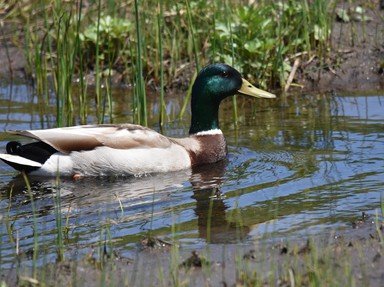Quiz Answer Key and Fun Facts
1. Both the black-bellied and fulvous versions of this type of duck are named for the sounds they make. Which bird sound is it?
2. This group of ducks have colorful names - blue-winged, green-winged and cinnamon. What's the second part of their common names?
3. This goose is named for a country where is resides. Which of the following is a country where it may be found as an introduced pest rather than as a natural resident?
4. Which colorful duck, which nests in trees, is the only North American duck to routinely hatch two broods per breeding season?
5. This duck was named for a feature that's hard to see in the wild - it was described by scientists studying dead specimens. Which duck is it?
6. What name is given to the dark morph version of snow geese?
7. This dabbling duck is the third most commonly hunted duck after mallard and teal. It has a notable black rump patch. Which duck is this?
8. This duck, the American wigeon, has a cream colored cap. What other name used for the wigeon reflects this feature?
9. Hunters call this goose a "speckle belly," what is its more official common name?
10. What are the two types of scaup in North America, which are often devilishly difficult to differentiate?
11. What is the primary food for these common merganser? Look at the bill for a hint.
12. The goose in this photo (ignore the black-necked stilt in the foreground) is an invasive species named for another country. Which goose is this?
13. This is a male mottled duck, with a pea-green bill. What color is the female mottled duck's bill?
14. This handsome duck is named for the shape of its bill. What part of the duck's name relates to the bill?
15. This small goose is more likely to be found along the coast rather than inland. Which goose is this?
Source: Author
pusdoc
This quiz was reviewed by FunTrivia editor
rossian before going online.
Any errors found in FunTrivia content are routinely corrected through our feedback system.
